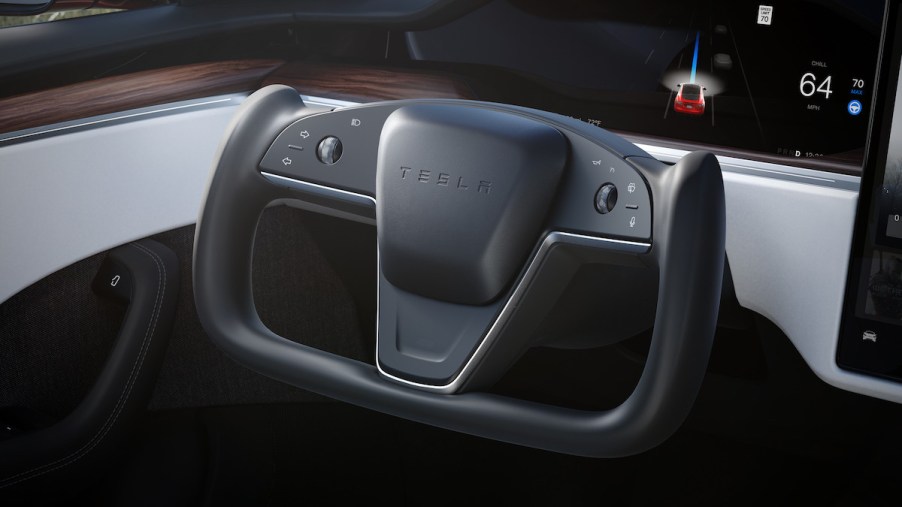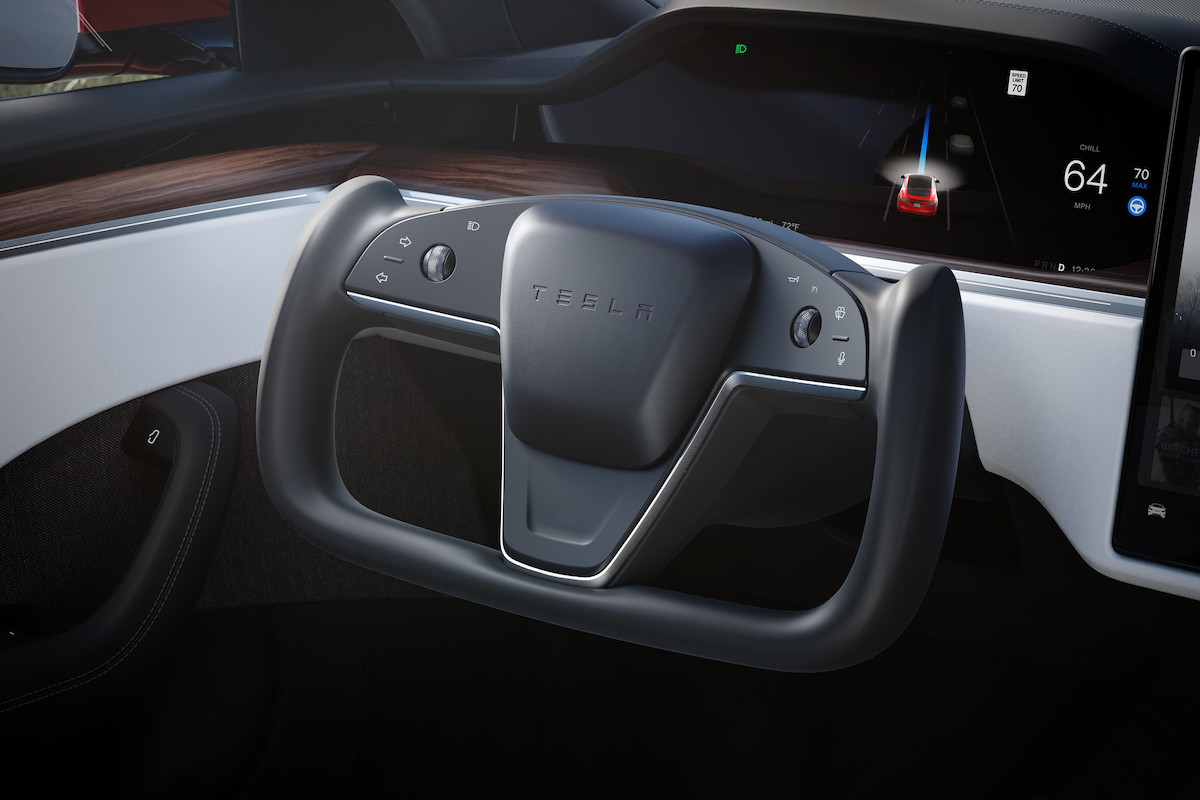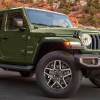
Is the Yoke Steering Wheel Now Trending?
One of the most polarizing points about Tesla not named Elon Musk is the yoke. Replacing the conventional steering wheel, this U-shaped device has alternately earned heaps of praise and scorn. And though the steering wheel yoke is most commonly associated with Tesla, its increasing inclusion in other well-known brands’ vehicles suggests its rise in popularity. Could we be seeing the birth of a new standard feature in cars?
Which brands have adopted the yoke steering wheel?

According to The Detroit Bureau, consumers can now find yokes in the Lexus LF-Z Concept and MG Cyberster, among other new models. Though the yoke isn’t original, its inclusion in these cars lets these automakers ride the wave of Tesla innovation and market their vehicles as cutting-edge. And they would likely join the hordes of fans in noting that the yoke provides better vehicle instrumentation visibility than a traditional steering wheel.
Other proponents note the yoke’s design forces drivers to keep their hands in the 9 and 3 o’clock positions on the wheel as recommended by safety experts. And Lexus notes the mechanical components in a conventional steering wheel’s shaft make the traditional design more effective. But because its vehicle uses steer-by-wire, the yoke is a better option for responsive handling.
However, many critics question whether drivers accustomed to a conventional steering wheel will become familiar enough with the yoke to avoid accidents. Experts at the National Highway Traffic Safety Administration (NHTSA) are actively engaged with Tesla about the yoke, especially in light of the alternate yoke version the EV maker released in the Model S in 2021.
Why the yoke steering wheel isn’t a radical idea
Despite its polarizing nature, the yoke’s design isn’t merely a love-it-or-hate-it aesthetic choice. You’ll find steering yokes in airplanes, sailboats, and Formula 1 racecars. Of course, the operating parameters for those vehicles are different from your regular sedan or SUV. For example, in a racecar, the yoke lends itself well to the variable-ratio steering necessary to implement lightning-fast turns on a racetrack.
But the yoke also lurks in a few earlier-model sedans, such as GM’s 1953 Firebird I and 1986 Oldsmobile Incas. However, these were concept cars. And though several of their design features were adopted, the yoke was not one of them.
The yoke steering wheel is also famously associated with the 1982 Pontiac Firebird Trans Am. This model — which starred in the NBC TV show Knight Rider as an AI-enhanced vehicle known as K.I.T.T. — inspired a generation of automotive designers. However, despite K.I.T.T.’s enduring popularity, the yoke never made it to the dealership. That is, not until Tesla came along.
What the future of the yoke could hold
Despite its appearance in non-Tesla cars, the yoke might remain primarily a Tesla feature. The Lexus and MG vehicles with the yoke are also concept cars. And many features introduced in prototypes never make it off the auto show floors and into mass production.
Further, the NHTSA has not definitively weighed in on the legality of Tesla’s yoke yet. The EV maker might find itself forced to comply with additional safety regulations. With all of the supply chain challenges automakers face right now, it’s unlikely anyone will want to take the chance on this unique feature, knowing they could lose money on it as regulators and lawmakers evaluate its safety.
Still, thanks to the increasing use of steer-by-wire, the yoke might emerge in many other vehicles. It’s already appeared in the 2022 Toyota bZ4X, which is on the market. And the yoke is still buzz-worthy. So it remains to be seen whether we’re watching the growth of a new trend or simply a few automakers’ passing interest.


